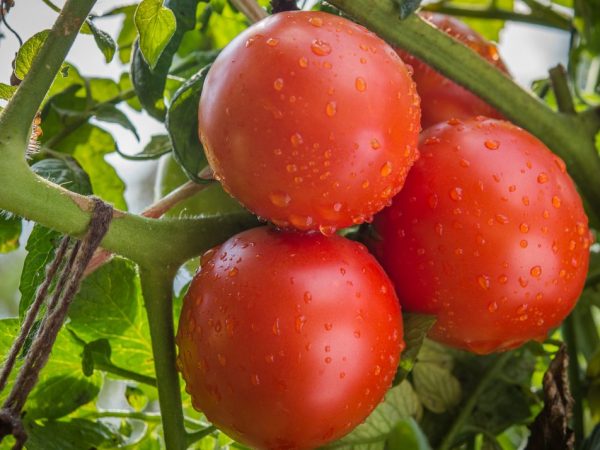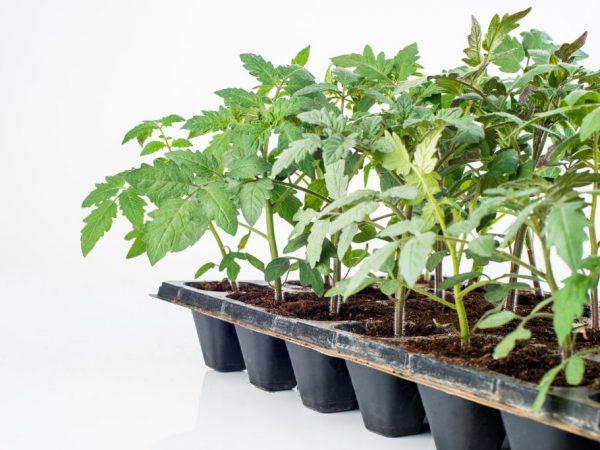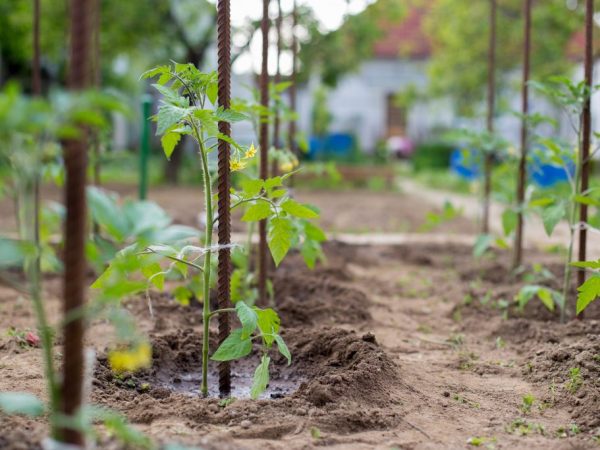Description of the variety of tomatoes Katya
Tomato Katya is a hybrid of the F1 variety and belongs to the early ripening tomato species. Due to its selective origin, Katya F1 tomatoes have good resistance to many diseases.

Description of the variety of tomatoes Katya
The variety is easy to plant and unpretentious, thanks to which both experienced farmers and beginners get a good harvest. Tomatoes have high palatability, so the variety is also suitable for sale on the market.
Features of the variety
Tomatoes of the Katya variety, according to the description, belong to the early ripening types of tomatoes with a bright presentation. The Ekaterina tomato is a hybrid of the F1 variety, which was bred in 2000. This type of tomato has a number of features:
- the plant is determinant;
- bushes are considered stunted, plant height reaches no more than 60 cm;
- the harvest ripens up to 80 days;
- leaves are of medium size and slightly corrugated;
- with an open method of disembarkation from 1 sq. m receive up to 10 kg of harvest, in greenhouse conditions - up to 15 kg;
- the inflorescence is formed in front of the 6th leaf on the stem, about 9 ovaries appear on each cluster;
- the fruit is round in shape and weighs about 80 g.
The color of the fruit depends on the sub-variety of the hybrid. The classic look has a rich red hue, and the pink Katya tomato is crimson.
The red hybrid is better for human consumption, while the pink hybrid is better for conservation and processing. Before choosing tomato seeds Katya F1, you should read the description on the package, because due to different characteristics, the fruits may not meet expectations.
Advantages and disadvantages
Tomatoes Katya F1 have many positive qualities, thanks to which farmers prefer to grow this species. These characteristics include:
- unpretentious care;
- good taste and presentation;
- uniform ripening of fruits;
- transportability and long-term preservation of taste during transportation;
- preservation of up to 90% of the harvest, due to the strength of the fruits;
- resistance to most diseases such as top rot, late blight and tobacco mosaic.
Despite the positive qualities that convince to plant Katya F1 tomato, the variety has a significant drawback: fragility of the stem and branches. The tomato needs an obligatory support, otherwise wind and rain can reduce the yield of the hybrid.
This type of tomato is vulnerable to diseases such as phomosis. To protect the plant from damage, the leaves of the bush are treated with Bordeaux liquid.
Growing seedlings

Follow the recommendations
Tomato Katya has a good yield both with the seed method of planting and with the help of seedlings. When growing tomatoes, it is better to use the seedling method, since in this case the fruits ripen faster.
To grow Katenka tomato seedlings, you should first of all pay attention to the growing container.The tubs must have special holes at the bottom, otherwise the soil for seedlings will be too wet and lead to rotting of the roots.
It is better to use a special sowing substrate or a mixture of sand and peat as a soil. Ordinary soil is not suitable for growing strong seedlings, the seeds should be in a soil rich in nutrients.
Before sowing, it is recommended to process each seed with potassium permanganate: This will help get rid of harmful bacteria that carry most diseases.
Seedling care
The level of heat is also important for seedlings. Throughout the cultivation of seedlings, the temperature should change:
- Initially, the seeds should be warmed up to 30 ° C in order to disinfect. This procedure should last at least 2 days.
- Next, the grains are heated to a temperature of 50 ° C for 3 days.
- After the procedure, the seeds are sown. Also cover each container with a transparent film. The seedling temperature should not exceed 23 ° C.
- As soon as the seeds germinate, the film is removed. Tomatoes are non-moisture-loving plants; with a large amount of water in the atmosphere and soil, they begin to hurt.
Seedlings are watered 3 times a week. At the same time, they make sure that the plants are not in a draft or near a cold window after watering, otherwise the ground will freeze and the tomatoes will die.
Preparing the soil before planting
The yield of this variety directly depends on the quality of the soil. The soil must be sandy loam or loamy, otherwise the plants will not have enough mineral components for proper growth. If the soil does not belong to one of the above types, it should be enriched artificially. To do this, it is enough to know a few secrets:
- lime or dolomite flour is used to reduce acid in the soil;
- animal manure or compost will help thin out heavy clay;
- sand soaked in urea removes excess moisture from the soil.
For planting Katya's tomato, the areas where legumes and root crops were planted a year earlier are best suited. In places where carrots or cucumbers have been grown, tomatoes give a lower yield.
Soil preparation begins in the fall, before the first frost. The following set of actions should be performed:
- At the end of November, the soil is loosened and enriched with useful mineral components.
- The dug area should overwinter.
- After the snow melts, the soil is harrowed and fertilized with alkali.
It is not recommended to harrow the soil until the snow has completely melted: the soil is not sufficiently saturated with moisture and will contain less minerals.
Planting seedlings and care

Plants should be protected from frost
Seedlings or seeds should be planted in the spring when the temperature does not drop below 0 ° C at night. Frost can kill bushes. The height of the central shoot at the time of disembarkation should be at least 20 cm. There should be several leaves and ovaries on the sprout.
According to the characteristic, the Katya F1 tomato planting scheme has the following sequence:
- form holes 10-15 cm deep;
- ash and mineral fertilizers are poured into each pit;
- sprouts are planted one by one in the hole and buried to the first leaves;
- for comfortable watering, a moat is formed around the shoot.
If tomatoes are planted in soil with high humidity, each hole is covered with earth mixed with sand. The root system of the hybrid is very fragile, and even minimal damage leads to disease and death of the plant.
Grassing tomatoes
The formation of bushes is carried out several times during the period of growing tomatoes. If unnecessary shoots are not removed in time, the plant will bring a lower yield. In addition, deformed fruits are a consequence of the lack of care for the bushes.
During pinching, they cut off or break off excess shoots on the central stem of the bush. The procedure should be done early in the morning so that the sun dries up the broken spots during the day.This will save the plant from decay. Experts do not recommend cutting the shoots close to the stem. In this case, a new sprout quickly grows in the place of the cut. Shoots should be broken off carefully, since the central stem of a Katya tomato is very fragile.
Fertilizer for tomatoes
Useful substances in the soil are the key to a good harvest. The lack of mineral components in the soil reduces the palatability of tomatoes and reduces the number of fruits on the bushes. To achieve maximum yield, tomatoes are artificially fed. The following components are suitable as fertilizer for tomatoes:
- fermented tomato shoots;
- animal manure;
- compost;
- orthoboric acid.
Animal manure often causes the appearance of harmful insects in the garden, so you need to observe the measure
Watering bushes
Tomatoes are watered immediately after planting. Irrigation of the soil should occur at a frequency of once every 10 days. In hot times of the day, the amount of watering is increased. It is necessary to ensure that the ground does not crack: this can cause serious damage to the plant.
Direct sunlight dries up the foliage and causes injury to the ovaries. To avoid this, install an artificial shade over the site at noon. For this, special materials are purchased or mown weeds are used.
Conclusion
Tomatoes of the Katya F1 variety attract with their unpretentiousness and good taste. The breeding origin of the variety endowed the plant with resistance to many diseases, which makes it possible to grow a tomato in unfavorable conditions.
This early maturing tomato is suitable for those who want to make the most of their profit in the first months of summer. The tomato shows excellent results in open planting and is suitable for greenhouse cultivation.


